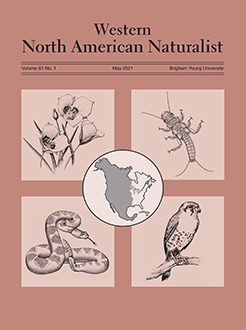Riparian areas are an important resource for many wildlife species, especially in the arid Southwest. Understanding species occurrence in areas dominated by nonnative vegetation is important to determine whether management should be implemented. Saltcedar (Tamarix spp.) is one of the most prevalent and invasive nonnative woody species in riparian areas in the southwestern United States, and it can alter vegetation structure. Little is known about how meso (medium) and large carnivores and herbivores use or avoid stands of saltcedar. We investigated mammal activity in 3 riparian forest types along the San Pedro River in southeastern Arizona: nonnative saltcedar, native mesquite (Prosopis spp.) woodland, and native cottonwood (Populus fremontii) and willow (Salix gooddingii) forest. We determined mammal use, diversity, and occupancy across riparian forest types. We sampled mammals along approximately 25 river kilometers between July 2017 and October 2018, using 18 trail cameras (6 per forest type) spaced 1 km apart. We summarized environmental variables around the cameras and reduced the variables to 4 components using a principal component analysis. We observed 14 meso and large mammal species, including bobcat (Lynx rufus), coyote (Canis latrans), and white-nosed coati (Nasua narica) over 7692 trap nights. Occupancy of some species may have been influenced by the environmental components, but models showed high standard errors, making it difficult to draw firm conclusions. Our results do not indicate that nonnative saltcedar was actively avoided. There were no discernible differences in detections of species or taxonomic groups among forest types; however, the highest species diversity was in mesquite woodlands. We did not find evidence of competitively dominant predators (coyotes and mountain lions [Puma concolor]) altering the temporal activity patterns and forest use of subordinate species (gray fox [Urocyon cinereoargenteus] and bobcat), as each pair used the same riparian space at similar times.
How to translate text using browser tools
27 April 2021
Using Trail Cameras to Document Meso and Large Mammal Use of Native and Nonnative Riparian Forest Types in Southeastern Arizona
Cheyenne J. Herzog,
Heather L. Bateman
ACCESS THE FULL ARTICLE

Western North American Naturalist
Vol. 81 • No. 1
May 2021
Vol. 81 • No. 1
May 2021





